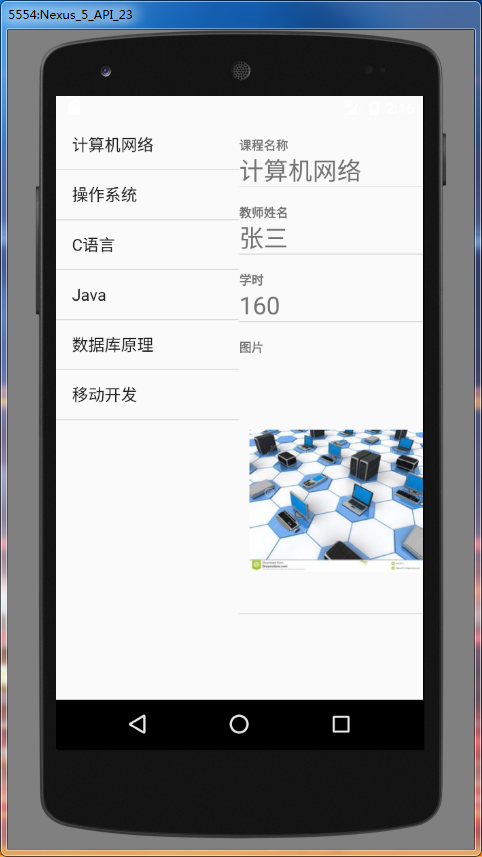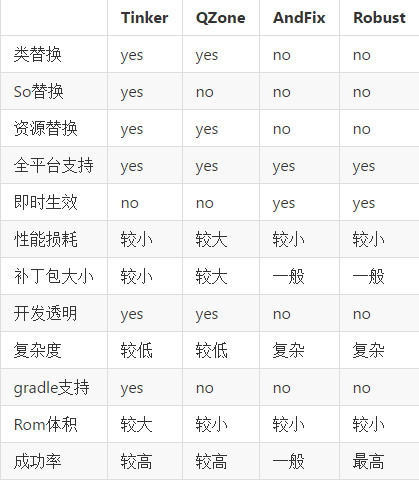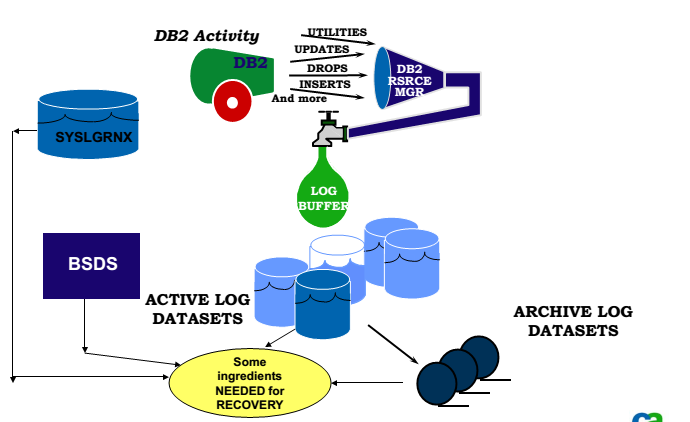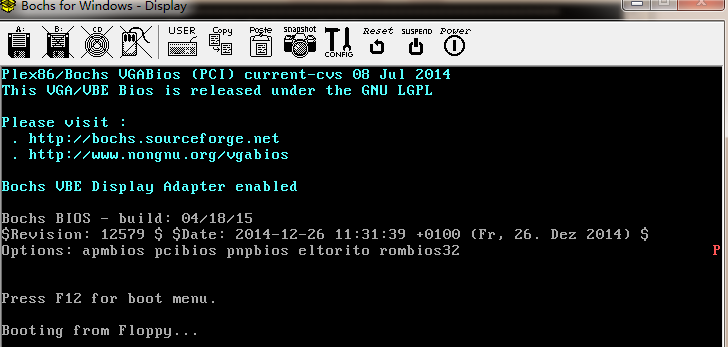編輯:關於android開發
ListFragment繼承了Fragment,顧名思義,ListFragment是一種特殊的Fragment,它包含了一個ListView,在ListView裡面顯示數據。
Java類文件:
package com.example.hzhi.fragmentdemo;
import android.app.Activity;
import android.os.Bundle;
import android.app.FragmentManager;
import android.app.FragmentTransaction;
public class MainActivity extends Activity {
private FragmentManager manager;
private FragmentTransaction transaction;
@Override
protected void onCreate(Bundle savedInstanceState) {
super.onCreate(savedInstanceState);
setContentView(R.layout.activity_main);
manager = getFragmentManager();
transaction = manager.beginTransaction();
ListFragmentImpl frgImpl = new ListFragmentImpl();
ListFragmentSelf frgSelf = new ListFragmentSelf();
transaction.add(R.id.fragment1, frgImpl, "frgImpl");
transaction.add(R.id.fragment2, frgSelf, "frgSelf");
transaction.commit();
}
}
xml布局文件:
<LinearLayout xmlns:android="http://schemas.android.com/apk/res/android"
xmlns:tools="http://schemas.android.com/tools"
android:layout_width="match_parent"
android:layout_height="match_parent"
android:orientation="horizontal" >
<LinearLayout
android:id="@+id/fragment1"
android:layout_weight="1"
android:layout_width="match_parent"
android:layout_height="match_parent"
android:orientation="vertical"/>
<LinearLayout
android:id="@+id/fragment2"
android:layout_weight="1"
android:layout_width="match_parent"
android:layout_height="match_parent"
android:orientation="vertical"/>
</LinearLayout>
可見MainActivity是比較簡單的,在布局裡面放了左右兩個ListFragment。
Java類文件:
package com.example.hzhi.fragmentdemo;
import android.app.ListFragment;
import android.widget.ListView;
import android.os.Bundle;
import android.view.LayoutInflater;
import android.view.View;
import android.view.ViewGroup;
import android.widget.ArrayAdapter;
import android.util.Log;
import android.widget.Toast;
import android.widget.SimpleAdapter;
import java.util.Map;
import java.util.HashMap;
import java.util.List;
import java.util.ArrayList;
public class ListFragmentImpl extends ListFragment{
private static final String TAG = "ListFragmentImpl";
private ListView selfList;
String[] classes = {
"計算機網絡",
"操作系統",
"C語言",
"Java",
"數據庫原理",
"移動開發",
};
@Override
public View onCreateView(LayoutInflater inflater, ViewGroup container,
Bundle savedInstanceState) {
Log.d(TAG, "onCreateView");
return inflater.inflate(R.layout.list_fragment_impl, container, false);
}
@Override
public void onCreate(Bundle savedInstanceState) {
Log.d(TAG, "onCreate");
super.onCreate(savedInstanceState);
// 設置ListFragment默認的ListView,即@id/android:list
this.setListAdapter(new ArrayAdapter<String>(getActivity(),
android.R.layout.simple_list_item_1, classes));
}
public void onListItemClick(ListView parent, View v,
int position, long id) {
Log.d(TAG, "onListItemClick");
// 找到ListFragmentSelf
ListFragmentSelf listFragmentSelf = (ListFragmentSelf) getFragmentManager().
findFragmentByTag("frgSelf");
listFragmentSelf.flushData(position);
}
}
布局文件:
<?xml version="1.0" encoding="utf-8"?>
<LinearLayout xmlns:android="http://schemas.android.com/apk/res/android"
android:layout_width="match_parent"
android:layout_height="match_parent"
android:orientation="vertical" >
<!-- ListFragment對應的android:id值固定為"@id/android:list" -->
<ListView
android:id="@id/android:list"
android:layout_width="match_parent"
android:layout_height="match_parent"
android:drawSelectorOnTop="false"
/>
</LinearLayout>
Java類文件:
package com.example.hzhi.fragmentdemo;
import android.app.ListFragment;
import android.widget.ListView;
import android.os.Bundle;
import android.view.LayoutInflater;
import android.view.View;
import android.view.ViewGroup;
import android.util.Log;
import android.widget.SimpleAdapter;
import java.util.Map;
import java.util.HashMap;
import java.util.List;
import java.util.ArrayList;
public class ListFragmentSelf extends ListFragment{
private static final String TAG = "ListFragmentImpl";
private ListView selfList;
final String[] from = new String[] {"name", "title", "info", "picture"};
final int[] to = new int[] {R.id.text0, R.id.text1, R.id.text2, R.id.picture};
private String[] tname = new String[]{"計算機網絡", "操作系統", "C語言", "Java", "數據庫原理", "移動開發"};
private String[] ttitle = new String[]{"張三", "李四", "王五", "Tom", "Mike", "Peter"};
private String[] ttime = new String[]{"160", "50", "40", "200", "180", "150"};
private int[] pic = new int[]{R.drawable.jsjwl, R.drawable.czxt, R.drawable.cyy,
R.drawable.java, R.drawable.sjkyl, R.drawable.ydkf};
@Override
public View onCreateView(LayoutInflater inflater, ViewGroup container,
Bundle savedInstanceState) {
Log.d(TAG, "onCreateView");
return inflater.inflate(R.layout.list_fragment_self, container, false);
}
@Override
public void onCreate(Bundle savedInstanceState) {
Log.d(TAG, "onCreate");
super.onCreate(savedInstanceState);
flushData(0);
}
public void onListItemClick(ListView parent, View v,
int position, long id) {
Log.d(TAG, "onListItemClick");
}
public void flushData(int p){
// 建立SimpleAdapter,將from和to對應起來
SimpleAdapter adapter = new SimpleAdapter(
this.getActivity(), getSimpleData(p),
R.layout.list_item, from, to);
this.setListAdapter(adapter);
}
private List<Map<String, Object>> getSimpleData(int p) {
List<Map<String, Object>> list = new ArrayList<Map<String, Object>>();
Map<String, Object> map = new HashMap<String, Object>();
map.put("title", "課程名稱");
map.put("info", tname[p]);
list.add(map);
map = new HashMap<String, Object>();
map.put("title", "教師姓名");
map.put("info", ttitle[p]);
list.add(map);
map = new HashMap<String, Object>();
map.put("title", "學時");
map.put("info", ttime[p]);
list.add(map);
map = new HashMap<String, Object>();
map.put("title", "圖片");
map.put("picture", pic[p]);
list.add(map);
return list;
}
}
布局文件:
<?xml version="1.0" encoding="utf-8"?>
<LinearLayout xmlns:android="http://schemas.android.com/apk/res/android"
android:layout_width="match_parent"
android:layout_height="match_parent"
android:orientation="vertical" >
<!-- ListFragment對應的android:id值固定為"@id/android:list" -->
<ListView
android:id="@id/android:list"
android:layout_width="match_parent"
android:layout_height="match_parent"
android:drawSelectorOnTop="false"
/>
</LinearLayout>
行布局文件:
<?xml version="1.0" encoding="utf-8"?>
<LinearLayout xmlns:android="http://schemas.android.com/apk/res/android"
android:layout_width="match_parent"
android:layout_height="match_parent"
android:orientation="vertical" >
<TextView android:id="@+id/text0"
android:textSize="12sp"
android:text
android:layout_width="match_parent"
android:layout_height="wrap_content"/>
<TextView android:id="@+id/text1"
android:textSize="12sp"
android:text
android:layout_width="match_parent"
android:layout_height="wrap_content"/>
<TextView android:id="@+id/text2"
android:textSize="24sp"
android:layout_width="match_parent"
android:layout_height="wrap_content"/>
<ImageView
android:id="@+id/picture"
android:layout_width="wrap_content"
android:layout_height="wrap_content"
android:paddingLeft="10dp" />
</LinearLayout>
最重要的方法是,當點擊左邊ListFragment的某一行時,取得改行的position,然後根據Tag找到右邊的ListFragment,並調用flushData()方法,使右邊的ListFragment刷新數據。

 熱修復-Tinker,修復-tinker
熱修復-Tinker,修復-tinker
熱修復-Tinker,修復-tinker 微信開源,真是喜出望外,必須要去看看啊,比起nuwa來微信好很多,而且github上也有專門的官方文檔說明,還有很多
 Android屏幕計量單位詳解,android計量單位
Android屏幕計量單位詳解,android計量單位
Android屏幕計量單位詳解,android計量單位1.px (pixels)(像素):是屏幕的物理像素點,與密度相關,密度大了,單位面積上的px會比較多。通
 A DB2 Performance Tuning Roadmap --LOG INTRODUCTION
A DB2 Performance Tuning Roadmap --LOG INTRODUCTION
A DB2 Performance Tuning Roadmap --LOG INTRODUCTION本文的內容是在整理報表時,對DB2 STAT LOG AVITIVI
 Linux內核系列—操作系統開發之進入32位保護模式,linux保護模式
Linux內核系列—操作系統開發之進入32位保護模式,linux保護模式
Linux內核系列—操作系統開發之進入32位保護模式,linux保護模式源碼如下: ; ========================================